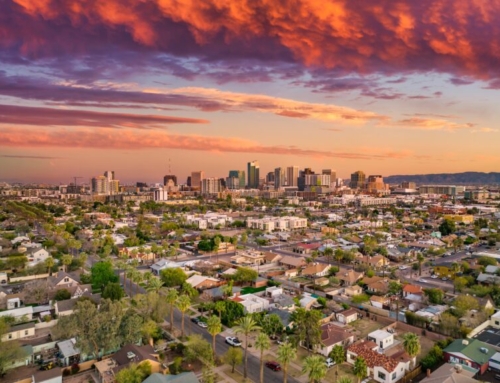Average monthly rent for Phoenix apartments over the past 18 months increased at a rate that ranked in the top five for major U.S. cities, according to a new study by RENTCafe.
Phoenix saw a 6.8 percent increase in average monthly rent, from $933 to $996, based on data collected from January 2017 through July 2018. That rapid escalation placed them second nationally for big cities, just behind Queens, New York, which saw an 8.4 percent increase.
Still, Phoenix lags in overall cost relative to the national number. The study showed average rent in the U.S. was $1,412.
Two other Arizona cities showed up at the top of these lists, signaling that while the state has seen a high degree of investment in apartment development recently, it has corresponded with a dramatic uptick in rent costs for those who live in multifamily housing.
For cities with between 300,000 and 600,000 inhabitants, Mesa ranked first in the country in year-over-year rent change. The city experienced a 6.9 percent increase in rent, from $903 to $965 on average.
Peoria also topped the list for cities with a population below 300,000. The West Valley city’s average rent is more in line with the national average, settling in at $1,114 at the end of July 2018. That number represents a 10.1 percent jump over the 18 months of the study.
Altogether, that sizable uptick in Peoria represents the fourth-largest increase in the country.
The rent increase Valleywide can be linked back to simple supply and demand, said Tom Shelton, a principal at Shelton-Cook Real Estate Services, which manages approximately 18,750 units in Arizona.
“The reality is the last several years, and what we’re expecting the next several years, is demand exceeding supply,” Shelton said, and that so-called “renters by choice,” or those who prefer the flexibility of renting over buying a home, have inflated the demand for multifamily residences.
As for the specifics of the Arizona market, Shelton posited that the region west of Interstate 17 and in Mesa may be regressing to statewide levels simply as a result of economic development measures.
Looking at the Loop 101 Corridor in the East Valley, Shelton said new projects in Tempe have leaked into western Mesa to help develop that area.
“A lot of those rent increases in Tempe are bleeding over into the western part of Mesa. It’s still inexpensive to live in Mesa, but we’re seeing increases because of what’s happening in the surrounding area,” Shelton said.
Accounting for population, the growth in Phoenix is most noteworthy, as developers such as Evergreen Devco Inc. and 3rd Avenue Investments plan luxury apartment projects across the city. The companies have started work at several separate sites this summer.


